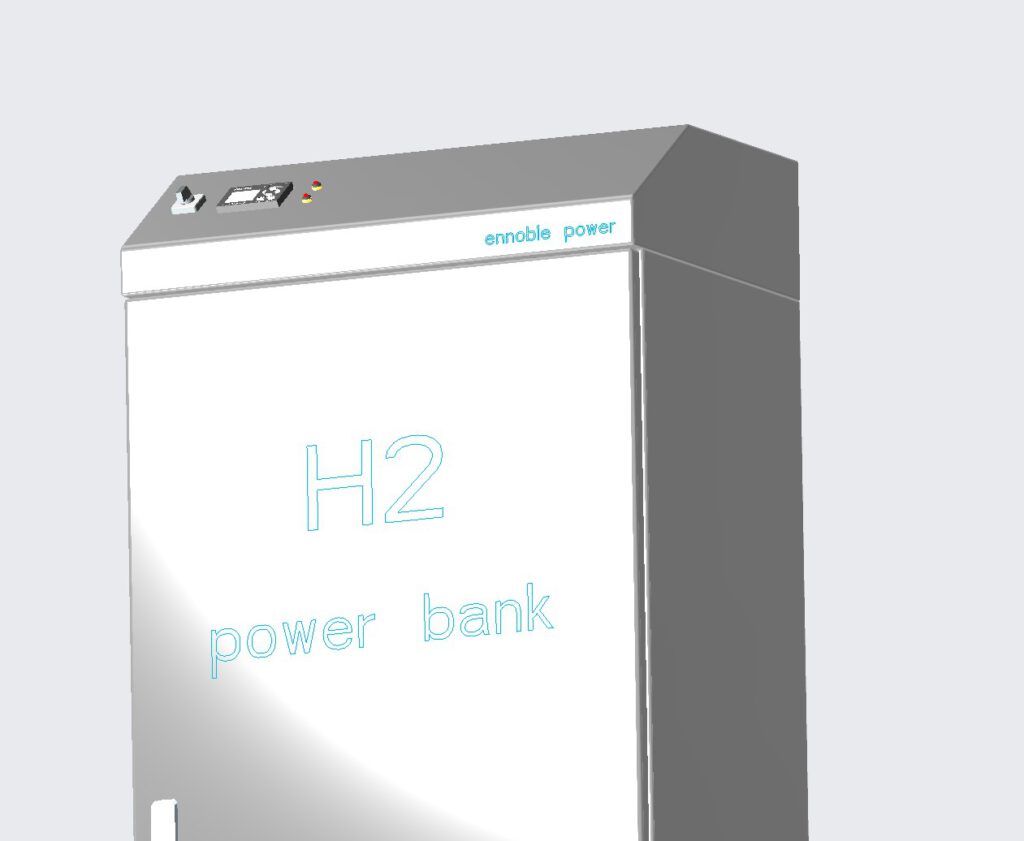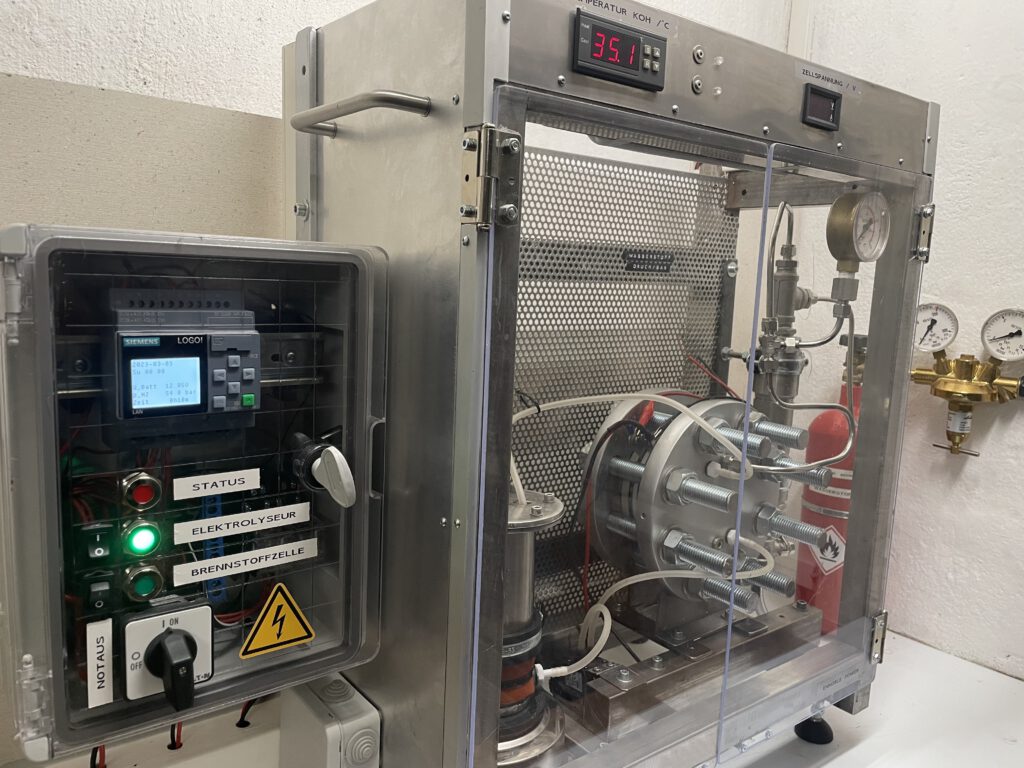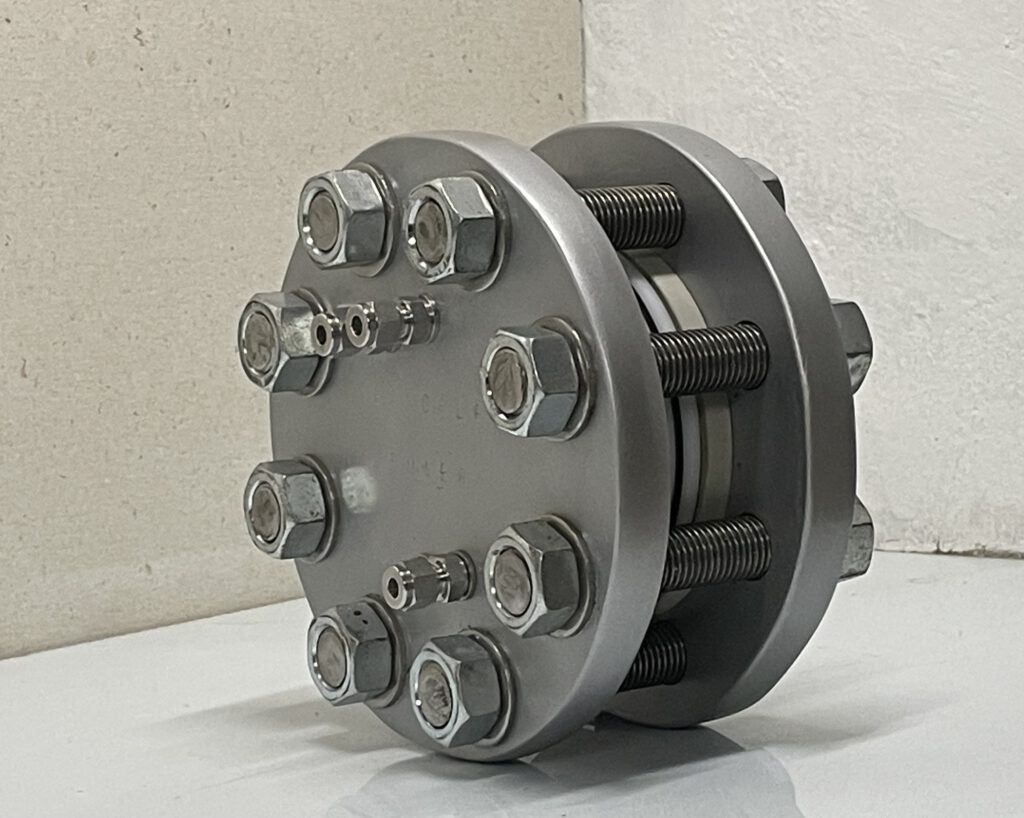Hydrogen device
The storage of electrical energy from photovoltaic is playing a significant role in the future homes. To relieve the burden on the power grids and generate an economic advantage, solar power should be used by yourself if possible and also temporarily stored. Daily fluctuations can be easily compensated with batteries, but for longer periods these are too expensive and ecologically unacceptable. This is where the hydrogen power bank device from ennoble power comes into play!

The H2 power bank woks as an conventional battery storage while photovoltaic modules can be directly connected and a grid connection is given via 230 V plug-in.
Installation Situation
In residential homes the H2 Power Bank can be easily installed – for example instead of an old gas boiler.

The hydrogen unit is considered an ideal extension of your battery storage. With a capacity of around 500 kWh, the device only costs a fifth of a normal lithium-ion battery. The device is simply integrated into the building technology so that the waste heat can also be used and an overall efficiency of over 90% can be achieved
Application in autonomus operation
A compact hydrogen device for the seasonal storage of solar energy is currently being developed in the ennoble power laboratory. In summer, excess photovoltaic power is fed into an electrolyzer, which produces hydrogen and stores it in pressurized steel bottles.

A functional model of the hydrogen device has now been set up in the ennoble power laboratory and is currently in the test phase. The device is operated in self-sufficient island operation on a photovoltaic system with battery storage. The grid-decoupled mode of operation guarantees the production of green hydrogen in accordance with current EU guidelines. This is particularly relevant for the operation of fuel cell heating devices in winter, as these devices only receive state funding if they can be operated with green hydrogen.
AEM pressure electrolzer
In electrolysis, ennoble power relies on a novel anion exchange membrane (AEM). Comparable to a PEM, charged ions move within a stable membrane structure, with negatively charged anions (OH‾ ions) enabling charge transport in an AEM. In principle, a high level of energy conversion efficiency can be achieved and at the same time a significant pressure difference can be built up between the electrodes. This technology also uses inexpensive nickel catalysts, meaning that expensive precious metals such as platinum and iridium can be dispensed with.

A suitable AEM pressure electrolyzer was developed and tested for the hydrogen device in the laboratory for fuel cell technology at FRANKFURT UNIVERSITY UAS. Gas diffusion electrodes made of Raney nickel from Gaskatel are used here. The electrolyzer produces hydrogen gas at a pressure of up to 80 bar, so that gas cylinders can be at least partially filled without the need for an expensive mechanical compressor.
www.frankfurt-university.de/brennstoffzellenlabor
